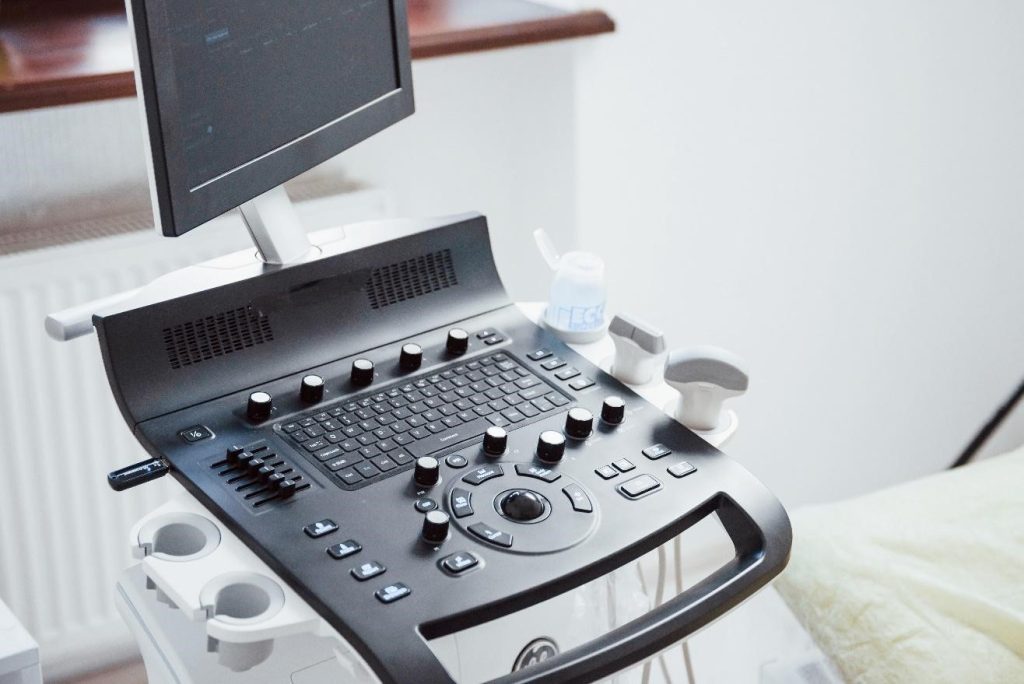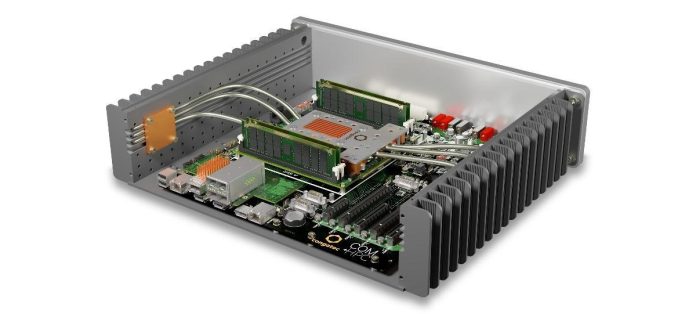Maximilian Gerstl, congatec Product Line Manager and AI expert, and Zeljko Loncaric, congatec Market Segment Manager Medical and Infrastructure
AI in medical technology supports health professionals and enhances diagnostic accuracy. As AI algorithms must process vast amounts of data in real-time, there is a need for high-performance computing solutions such as conga-TC700 Computer-on-Modules (COMs). These COMs are powered by Intel Core Ultra processors, which uniquely integrate CPU, GPU, and NPU on a single chip.
Medical device manufacturers have consistently been at the forefront of innovation and technological progress. As early adopters, many have embraced and utilized AI systems for decades, well before widespread general acceptance.
The availability of increasingly powerful hardware components and the development of advanced algorithms enabled device manufacturers to use AI methods to significantly improve medical imaging and data analysis in the 1990s.
The emergence of machine learning for training AI algorithms in the 2000s led to even more sophisticated image analysis and the development of high-performance computing systems in fields like radiology. Since the 2010s, device manufacturers have made further strides in image processing and big data analysis.
Modular concept for medical devices
congatec’s modular concept is particularly well-suited for a wide range of medical devices that can benefit from AI integration. This includes high-performance imaging equipment such as MRI and CT scanners (Fig 1), as well as more compact devices like ultrasound, X-ray, endoscopy equipment, and mammography screening devices.

Beyond diagnostic devices, Computer-on-Modules also play a crucial role in therapeutic equipment such as ventilators (Fig 3). In these systems, they enable intelligent algorithms that automatically determine optimal ventilation settings for patients. In addition, these algorithms continuously analyze critical patient data and adjust parameters like respiratory rate, tidal volume, and oxygen supply.
The development, application, and significance of AI in medical technology have gained substantial momentum over the past decade. This progress is driven not only by continuous advances in computer technology but also by optimizations in AI algorithms.

MRI scans in under a minute
An innovative AI algorithm for magnetic resonance imaging (MRI) now enables scans to be completed in less than a minute, significantly reducing the time patients spend in the scanner. This advanced scanning process, known as upscaling or super-scaling, requires fewer images than traditional methods. The pre-trained AI interpolates a small number of individual images into a high-resolution overall image. Moreover, the AI can independently and accurately sharpen blurry areas within images.
AI-based endoscopy devices for more accurate diagnoses
AI is also being integrated into endoscopy devices, for instance to alert doctors to potentially missed lesions during examination and directing their attention to specific areas of concern. High-performance inference is crucial to ensure that this happens in real-time and that trained models execute swiftly. AI-based endoscopy devices provide doctors with a powerful tool to achieve more accurate clinical results and deliver better patient care.
Historically, medical devices required either dedicated GPGPU computing accelerators (often integrated via the classic PCIe slot and relatively large and power-hungry) or smaller AI accelerator cards designed for an M.2 slot to achieve the necessary AI performance.
AI capabilities integrated into the chip
Today, more and more processor manufacturers are adapting their chip portfolios to meet the demands of artificial intelligence. By integrating AI functions directly into their products, many medical applications can now be realized more easily, quickly, and at a lower total cost of ownership (TCO), eliminating the need for additional accelerator cards.
CPU, GPU, and NPU on one chip for the first time
The first generation of Intel Core Ultra processors (Fig 4) exemplifies this trend. These processors uniquely combine a CPU, a particularly powerful GPU (graphics processing unit), and – for the first time – an NPU (neural processing unit) on a single chip. AI applications with high computing power demands can leverage the combined power of the CPU, GPU, and NPU, whereas AI models requiring high energy efficiency and high performance per watt can be optimized to run only on the NPU.
The new NPU in the Meteor Lake processors executes machine learning algorithms and AI inference with approximately 20 times greater energy efficiency compared to standard x86 instruction sets. For image classification tasks, applications can utilize the graphics unit as a general-purpose GPU (GPGPU), achieving performance levels comparable to discrete graphics units. This results in 1.9 times faster graphics or GPGPU processing, enabling a more detailed, meaningful, and immersive user experience.
These new AI features can be easily implemented using standardized Computer-on-Modules, particularly COM Express, without requiring developers to modify existing designs.
COMs provide high flexibility
This is precisely why COMs are popular in medical technology among other industries. As AI and its applications continue to evolve, the flexibility of COM and carrier board solutions allows developers to adapt their products to new computing requirements with minimal integration effort and software modifications. They just need to follow two simple steps: unplug the old module, plug in the new one, done!
One such Computer-on-Module suitable for demanding edge AI workloads is the conga-TC700. This COM Express Type 6 Compact module, powered by Intel Core Ultra processors (codenamed Meteor Lake), integrates all the necessary AI functions for the applications previously discussed.
Generate findings automatically
The conga-TC700 is particularly well-suited for vertical medical markets and their applications due to its long availability of ten years and the ease of upgrading applications based on the open COM Express standard. It enables powerful real-time computing and offers high-performance AI functions for various medical applications, including surgical robots, diagnostic systems, and high-resolution diagnostic workstations for radiologists. The latter can automatically identify critical findings, providing valuable support to medical professionals.
Beyond the new edge AI capabilities of the Intel Core Ultra platform, Intel also offers the Intel Geti software framework. This comprehensive platform facilitates the creation of powerful computer vision models. Developers benefit from a unified ecosystem that spans from machine learning in the cloud to AI-accelerated edge devices.
Optimizing AI models with OpenVINO
The congatec COMs ecosystem is further enhanced by Intel’s open-source software toolkit, OpenVINO. This tool allows for the optimization and transfer of pre-developed, often hardware-specific AI models to the customer’s platform, regardless of where they were created. OpenVINO can also manage workload distribution, intelligently deciding which tasks should be handled by the CPU, GPU, or NPU for maximum efficiency.
Comprehensive support for medical device developers
congatec offers an extensive ecosystem and design-in services to simplify and accelerate application development. The offering includes evaluation, production, and application-ready carrier boards, as well as customized active and passive cooling solutions. congatec also provides a wide range of application development services, including extensive documentation, training, signal integrity measurements, shock and vibration tests for customer-specific system designs, temperature screening, and high-speed signal compliance testing.
Conclusion
AI has been a long-standing focus in medical technology, predating its adoption in other industrial markets. In fact, AI is even being touted as the new operating system for medical devices. Recent advancements in semiconductor technology have yielded microprocessors with exceptionally high computing and graphics performance. Featuring integrated NPU units, they enable faster, more accurate diagnoses while consuming less energy than predecessors. When implemented through Computer-on-Modules, today’s AI-supported medical devices become highly future-proof, making it easy to integrate upcoming technologies by simply swapping the module.








